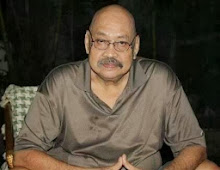Chessmoso
Thursday, November 28, 2013
ALTHOUGH the result was not unexpected, the margin was. Magnus Carlsen of Norway won three games and drew seven and that is like winning a basketball game by 50 points.
Anand was thoroughly humiliated and that was a surprise, at least to me, as I had a bet on him. Carlsen so dominated the match that it lasted only 10 games out of 12 .
Carlsen is the first Westerner to win the crown since 1972 when Bobby Fischer defeated Boris Spassky also by a wide margin. Experts are saying now that Magnus is the greatest player of all time and he has not even reached his peak yet. He will probably dominate chess for the next 20 years.
Kasparov compares him as a combination of Fischer and Karpov, a deadly blend of a positional attacking player. He says “Magnus rocketed to the top of the rating list almost without pause, displaying a consistency and tenacity rare in a young player to accompany his limitless talent.”
He also said that he comes once-in-a-generation and “a win by Carlsen is also a win for the chess world.” Kasparov was in India and watched all of the games.
Unlike Fischer, Carlsen is neither a xylothist nor a bigot and is personable and friendly. He was once described by the Washington Post as the “Mozart of chess” and also dubbed the “Justin Bieber of chess” after the match.
A fashion model in his spare time, Carlsen made it to the Time magazine list of the 100 most influential people in the world in 2013. He also won the Chess Oscars, awarded by Russian chess magazine ‘64’ to the world’s best player, for four consecutive years from 2009 to 2012.
Carlsen missed by a few weeks becoming the youngest world champion, a record set by Kasparov in 1985. He will be 23 on Nov. 30.
He has dominated the World Chess Federation’s list of top players in the last three years, with a top rating of 2870 Elo that broke Kasparov’s best of 2851 achieved in 1999. On the other hand , Viswanathan Anand has been champion for five years and was playing at home in Chennai, where he is considered a national icon.
It was the first time in eight world championship matches that Anand failed to win even a single game. He became the first Asian world champion in 2007 and at 43 was almost double Carlsen’s age.
“It’s clear he dominated,” Anand said. “My mistakes didn’t happen by themselves, clearly he provoked them, and all credit to him. The fifth game was a heavy blow.
I really hoped not to be afraid of him in long games but to match him. But it wasn’t meant to be.”
Organisers said up to 100 million people a day in India watched the games on TV and online, and estimated another 100 million hits in the world. In Norway, 600,000 households out of a population of six million watched the game, which was broadcasted live.
“I really hope that this can have some positive effect for chess, both in Norway and worldwide,” Carlsen said after clinching the title. “The match was shown on television and I know a lot of people who don’t play chess found it very interesting to follow.
And that’s absolutely wonderful.”
Despite his overwhelming dominance in the last few years, Carlsen warned rivals his best has yet to come.
“I still have so many ways to improve,” he said. “In every tournament, in almost every game, I find that I make mistakes. I definitely have some kind of talent but I don’t know exactly what it consists of.”
Chess sets in Norway were all sold out during the match.
With the title, Carlsen gets about 60 percent of the total $2.24 million in prize money, while Anand took home the rest. Fide also gets approximately $600,000.
(boypestano@gmail.com,www.chessmoso.blogspot.com)
